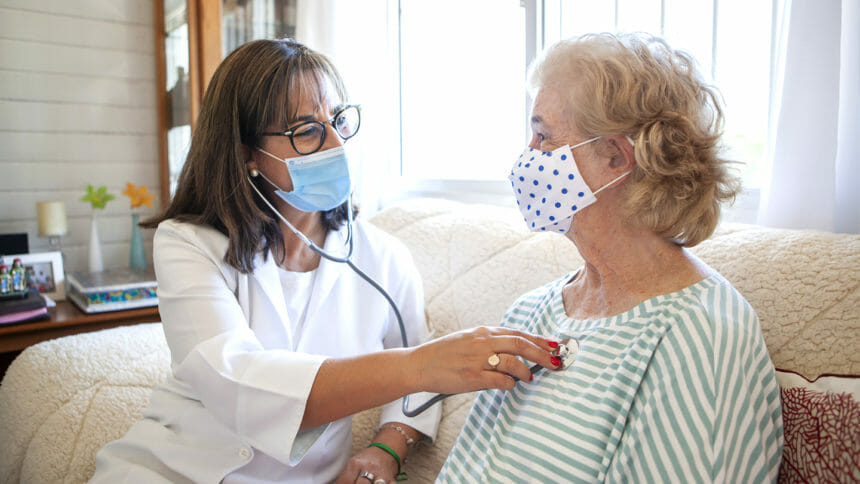
Expanding in-home care through hospital-at-home and telehealth after the COVID-19 public health emergency will require buy-in from both payers and consumers. That is the resounding message from providers as legislation surfaces in Washington to maintain waivers for the two in-home healthcare programs.
On Thursday, Sens. Tim Scott (R-SC) Tom Carper (D-DE) introduced the Hospital Inpatient Services Modernization Act (S. 3792), which would extend the Acute Hospital Care at Home waiver program two years beyond the end of the public health emergency, which is set to expire on April 16. The bill also would require the Centers for Medicare and Medicaid services to issue regulations establishing health and safety requirements for the waiver program. Representatives introduced a companion bill (H.R. 7053) in the House earlier this week.
Currently, approximately 200 hospitals and 90 health systems are participating in the CMS waiver program that lets patients receive hospital-level care at home. Moreover, only about 2,000 patients have been admitted, said Kevin Riddleberger, co-founder and chief strategy officer for hospital-at-home company DispatchHealth.
During the National Association for the Support of Long Term Care’s legislative and regulatory conference this week, Riddleberger said providers need to do a better job identifying hospital-at-home patients, and payers need to see the program’s value.
“I think it’s still on the payer to be able to expand the aperture of patients,” Riddleberger said.
Medicare Advantage plans have been slower to embrace hospital-at-home, but he is optimistic they are becoming more in tune with the direction healthcare is headed, he said.
Telehealth roadblocks
Meanwhile, other in-home programs face roadblocks. On Thursday, executives from Buffalo, NY-based Catholic Health System told members of the Home Care Association of New York they successfully ran a hospital and home care collaboration during the COVID-19 pandemic that leveraged telehealth and in-home visits for coronavirus patients who required ongoing monitoring but didn’t need to be hospitalized.
Although patients who opted for telehealth had less than a 6% readmission rate compared with the national average of 23%, Marla Duerr, vice president of patient services for Catholic Health System, said it was difficult to convince patients to receive care at home instead of the hospital.
“In hindsight, we should have had more [emergency department] involvement,” Duerr said. “We might possibly look at a risk tool that could be used for their discharge instructions.”
Efforts to continue telehealth programs that expanded care into the home during the COVID-19 pandemic are gaining steam in Washington. The omnibus bill that passed in the House earlier this week would extend telehealth flexibilities five months after the PHE ends. The Telehealth Extension and Evaluation Act introduced last month would extend those flexibilities two years beyond the end of the pandemic.

